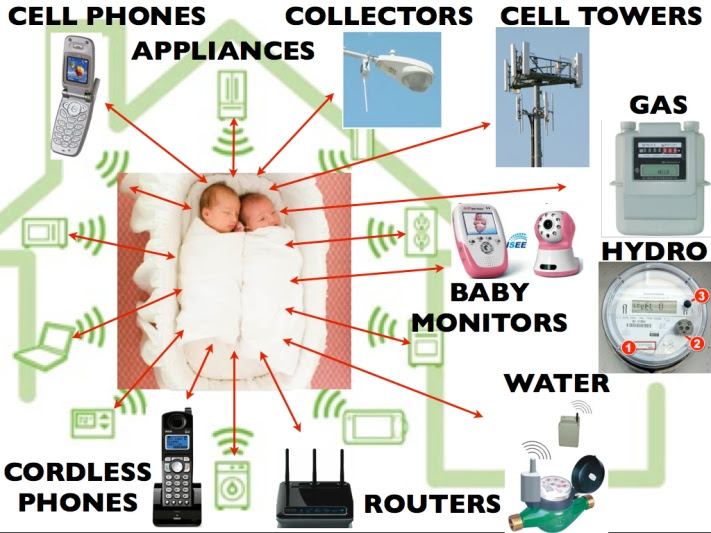Health Effects of EMF Radiation

The radiation from RF-EMF can cause damage to DNA, heat up of tissues and even disrupt the blood-brain barrier. These effects are real, and ARPANSA is actively involved with the EHS group, the medical professionals as well as researchers. ARPANSA will continue to study research related to the health effects of EMF radiation.
RF-EMF can cause DNA damage
Exposure to man-made electromagnetic fields (EMFs) can cause DNA damage, as well as other health adverse effects. EMFs can affect the intracellular ionic levels, which are essential to ensure the balance of electrochemical activity in cells. This can cause disruption to cell homeostasis and result to DNA destruction. Furthermore, exposure to EMFs is also associated with an overproduction of free radicals as well as reactive oxygen species (ROS).
Exposure to RF-EMF radiation has been linked with alterations in male germ cell development. emf radiation results in the development of germ cells into spermatozoa, aswell functioning maturation as spermatozoa pass throughout the epididymis. To investigate the effects of RF-EMF on male germ cell development, a specifically-designed waveguide machine was constructed to expose mice that were not restrained to RF-EME at 2.2 W/kg.
In a recent study researchers have discovered that exposure to RF-EME caused oxidative DNA damage in the spermatozoa. Sperm DNA fragmentation increased by 18% following one week of treatment and by 23 percent after five weeks. Furthermore, DNA damage in mitochondria was observed by measuring the level of a biomarker, 8-hydroxy-2-deoxyguanosine (8-OH-dG).
Although RF-EMF radiation is not yet considered to be a carcinogen. However, several studies have found that RF-EMF exposure can impair DNA integrity in a variety of cell varieties. In one such study researchers subjected Vero cells to an EMF of 100 Hz for 45 minutes. They assessed DNA damage for within 48 hours of exposure to determine if exposure affected DNA integrity.
RF-EMF causes tissue heating
Although the effects of RF-EMF are typically thought to be thermal, a few studies have shown that non-thermal effects are also present. These effects may account for some of the unresolved issues in epidemiological studies of EMF hypersensitivity. It is therefore important to look at the non-thermal aspects when conducting an extensive review.
The non-thermal effects of RF-EMF could be mediated by the cell membrane. emf radiation is a field where research has been extensively examined. Particularly the electrochemical properties of cell membranes has been investigated. It is believed that RF-EMF energy higher than 1 MHz is transferred to the tissue through dielectric and Ionic dissipation. Studies of the theory have suggested that the energy transfer to the tissue could be as high as 200 kV/m.
The electrical properties of tissues are controlled in the form and quantity of water molecules and ions and other substances in the body. This determines how absorbed EMR from RF is absorbed by different tissues. Organs with greater conductivity are likely to absorb more field, and thus cause more of an effect. This is why the degree of heating in tissues does not increase steadily as it moves from the exterior to the body and is only noticeable in hot spots. Bone and fatty tissue is less susceptible to heating by RF than other tissues, because they are low in water content.
The depth of the field's penetration depends on the strength and frequency of the field. Muscle tissue absorbs more field energy than other tissues and converts it to heat more efficiently. Typically the depth of penetration of RF-EMF is measured in millimeters (mm). However, the higher the frequency, the shallower the penetration.
RF-EMF causes blood-brain barrier disruption
Researchers have discovered that RF-EMF could disrupt the blood-brain barrier, altering sleep patterns and neurotransmitter levels. Additionally to this, the effects of EMF on brain activity have been linked to neurodegenerative disorders. For example, EMF from mobile phones could affect the electroencephalogram's activity and sleep patterns, as well as the actions of nitric Oxide and xanthin oxidase.
Researchers at Vienna University have studied the effects of RF-EMF exposure on brain cells. They also studied the effects of ELF EMF on brain system. Although the cellular mechanisms involved are not completely known but there is a clear association between ELF-EMF exposure and depletion of myelin. This relationship might account for the electro-hypersensitivity symptoms of electro-hypersensitivity. Fortunately, there are some tested methods to regenerate myelin within the brain.
Researchers have observed that exposure to the frequency of 900 millimeters EMF increased the permeability of BBB and also increased the signs of neuronal damage in rats. They also observed increased extravasation of albumin to neurons. Further, they found the following: after 30 mins of exposure at 900 MHz 99mTcMIBI increased its penetration in the cortex. But, this effect did not occur when using Evans blue injections.
However, RF-EMF does not have a clear method for disrupting the BBB. Evidence suggests that non-thermal EMF exposure can increase erythrocyte membrane permeability, which may influence the BBB and also increase the efflux of calcium-ion. Additionally, the presence of a 99mTc-MIBI radiotracer in the brain has been connected to increasing the permeability and permeability of the BBB.

